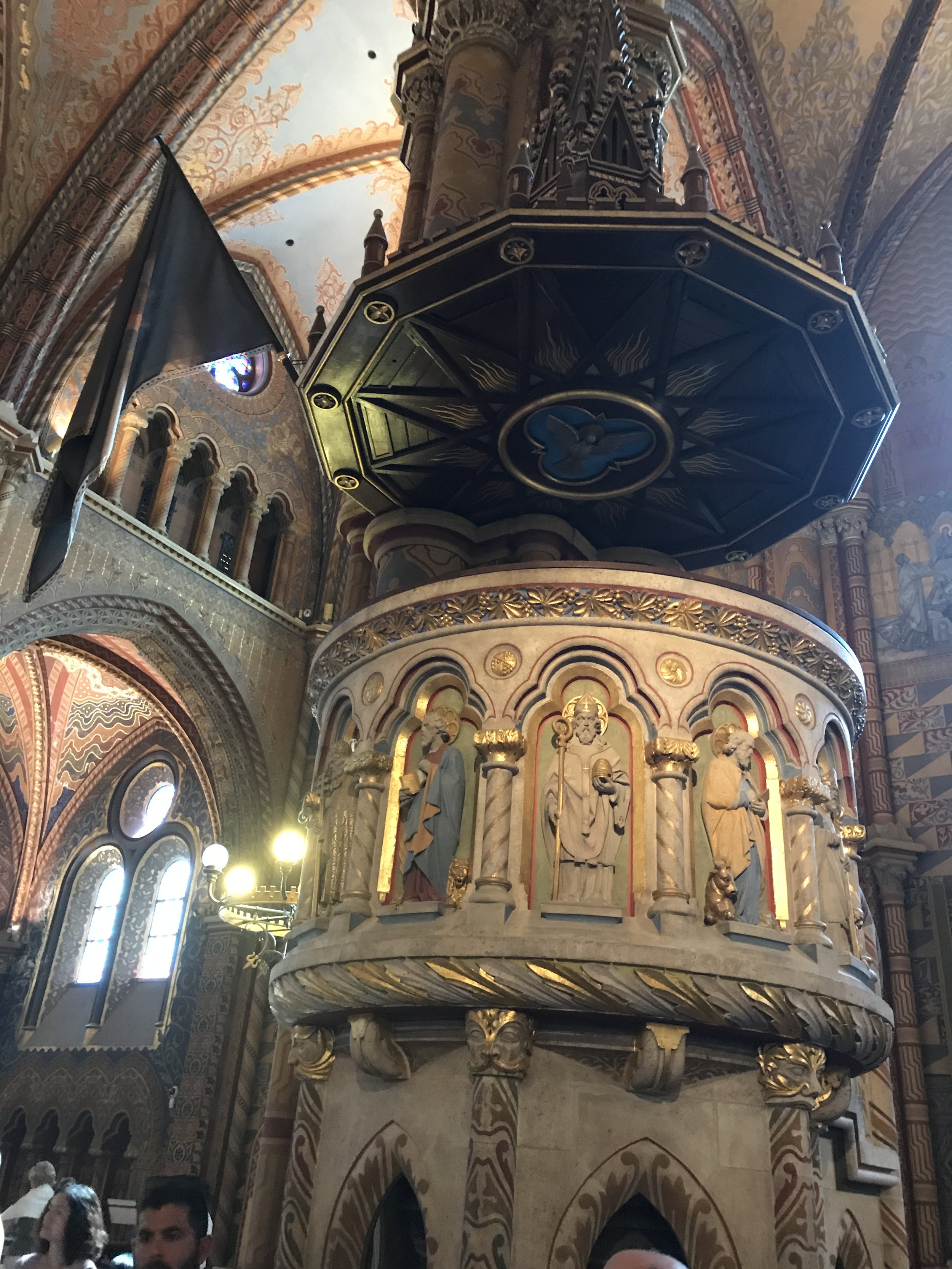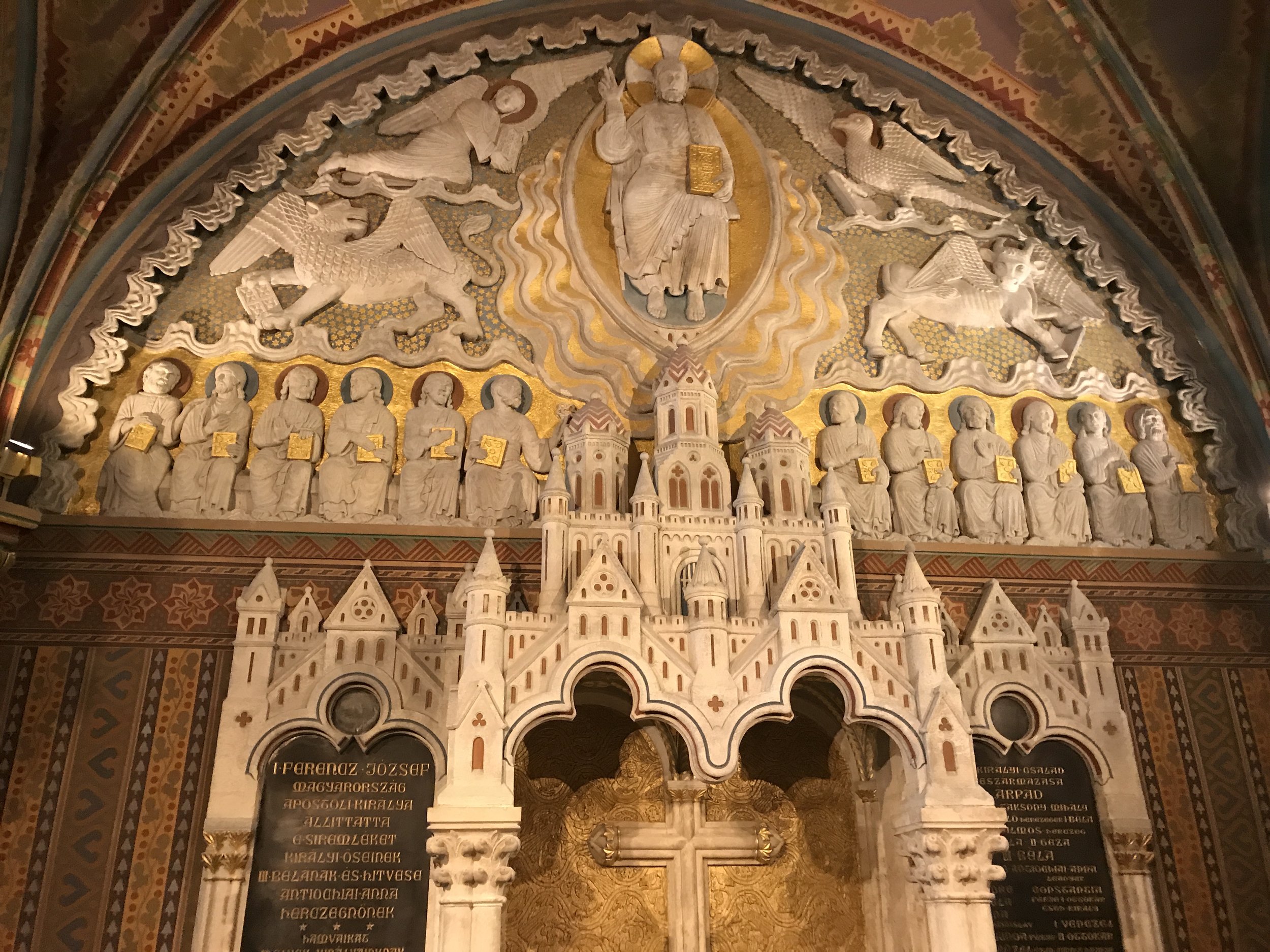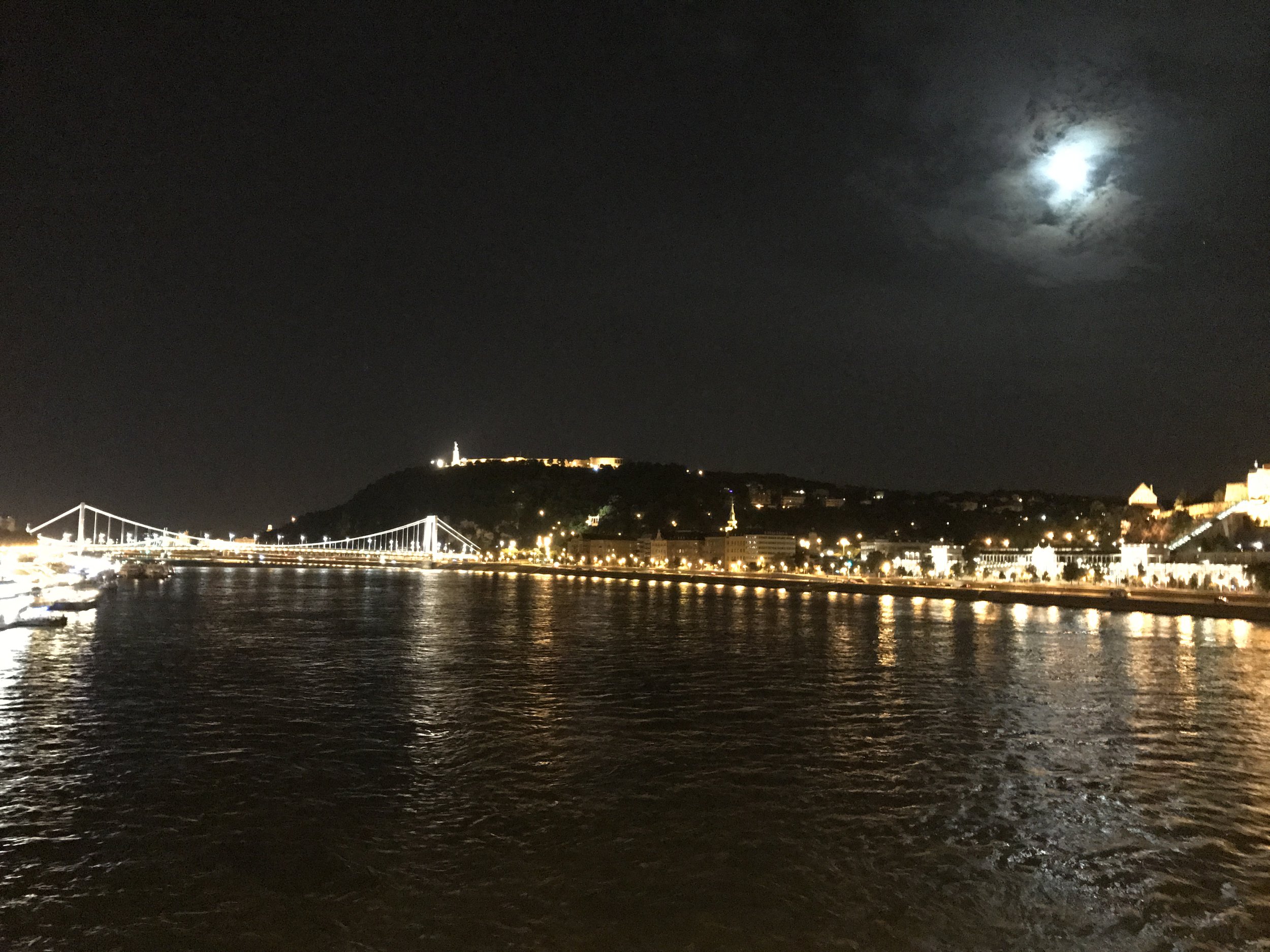Day 2, Budapest
Breakfast at the hotel.
The Royal Palace, The Hungarian National Gallery (next each other.) On top of the old citadel of Buda is the Fisherman’s Bastion.The original purpose of the Fisherman's Bastion was defense, as part of the Buda Castle wall. The bastion was named after the Fishermen's Town lying beneath and when necessary, the fishermen living here defended the tower.
Budapest isn't called the 'City of Baths' for nothing. Hungary is a land of thermal springs, and Budapest remains the only capital city in the world that is rich in thermal waters with healing qualities. Budapest is also one of the few places where you can experience traditional Turkish baths dating back to 16th and 17th centuries. There are several public natural spring pools, outdoor or indoor and health spa around the city.
Budapest Thermal Baths
A stop at the grocery store.
Later, as I began to realize how this trip would go, I took a night walk on my own. I wanted to walk across the Chain Bridge, of course. There is a momentous nightlife on the river banks nearby, too.
The Széchenyi Chain Bridge is a chain bridge that spans the River Danube between Buda and Pest, the western and eastern sides of Budapest (capital of Hungary.) Designed by English engineer William Tierney Clark and built by Scottish engineer adam Clark, it is named for Istvan Szechenyi a major support. It opened in 1849. At the time of its construction, it was regarded as one of the modern world's engineering wonders. Its decorations are made of cast iron.









































